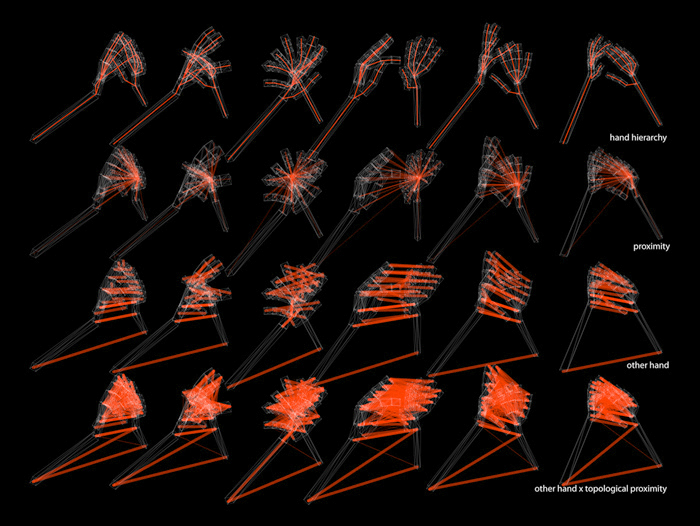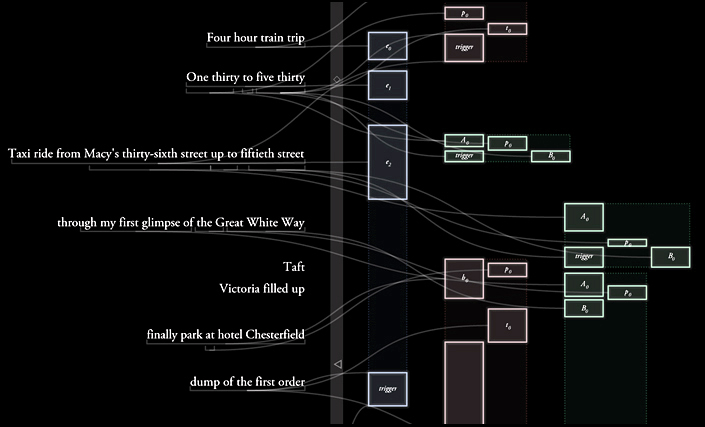Loops AI
Loops was created within – and runs from –an artificial intelligence program that produces ever-changing outcomes. Thus, no run of the artwork is ever the same.
Visual creatures
Our basic idea was to make the points that construct the hands of Loops “autonomous” – so that these points are, to a limited degree, live “creatures.” But what exactly is the nature of their autonomy? What can they decide to do, and why?

Points hierarchies
Each point chooses how:
-
To shape their bodies, through their connections to other points. Specifically, they decide which connection topological rule to follow – to reconstruct the hierarchy of the hand, or to grab points as they come close in space, or to connect to the opposite points, etc.
- To move – specifically, how to track the motion capture data: shall they lead or trail the motion, cut corners, or preserve imaginary physical momenta?
- To send messages and perturbative signals out into the colony, which can cause rapid shifts of behavior and appearance or else lead to local patches of agreement. (illus)
- To appear from a blended continuum of rendering styles, selected and named (as “adjectives”) by the artists. (illus)
To structure and then tune the visual flow of _ Loops_, we created a scripting interface that allowed us to adjust its visual styles and AI decision-making in real-time. Such adjustments were not in the form of direct commands; instead, they shifted tendencies within the artwork’s autonomous system, whose decisions were probablistic rather than fixed. (illus)
Sound score

Score
Our goal in creating the score was to find structures in the text that had both musical and linguistic function, that were halfway between forms found in music and in language.
Such formed included lists; comparisons; spatial relationships; and markings of the passage of time. An analysis of the text of the narration was coupled to the sound of the narration through marking of the onset and offset of each word in the recording of Cunningham’s voice.
The score describes the time periods during which the “sound creatures” listen for opportunities. (illus) Each sound creature can then draw upon its vocabulary of possible actions that correspond metaphorically to the kinds of structures that trigger them: list-actions repeat their triggering elements while searching for a stable rhythm inside the elements; comparison-actions state their elements and then emphasize the differences between them; passage actions state their first element and then continue to look for material that is sonically related until the close of their marked passage; return-actions compress material from their triggering element all the way back to where they “came from.”
The sound creatures must pay attention to each other as they opportunistically align, modify and perhaps even fight for space and relationships “on output.”
Visualization Suite
Loops is often accompanied by a suite of visualizations running on separate screens – synchronized to the main installation – that allow a careful and detailed exploration of this internal interactivity. The visualizations help viewers understand the underlying artificial intelligence that runs the piece – stepping through its script, seeing the propagation of messages between points, etc. These visualizations are more refined versions of the same tools that we used in the creation of the work.